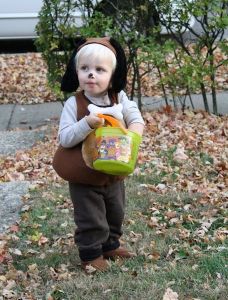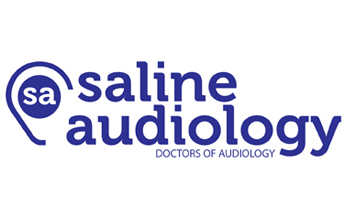Safety Tips For Your Halloween With Hearing Aids
Contributed by Lisa Packer, staff writer, Healthy Hearing | Tuesday, October 27th, 2015
Editor’s note: This article was originally published in 2014. We’ve updated it today with more safety tips for children and adults when it comes to Halloween.
The signs are everywhere. From the neighbor’s yard, where a giant inflatable ghost has loomed since mid-September, to the grocery store aisles laden with bags of sweet treats, we can’t deny Halloween is just around the corner. Yes, in just a few days, neighborhoods across the country will be criss-crossed by gangs of witches, zombies, princesses and a host of other creative and spooky characters. But Halloween isn’t just for kids anymore; adults have co-opted the celebration and love to get in on the fun as well.
The reality is that whether or not you have hearing loss, Halloween brings particular safety concerns that everyone, child or adult, needs to be aware of. Staying mindful of these Halloween safety tips can ensure that you can have a healthy, safe and enjoyable night, and that your only regret will be the sheer volume of miniature Snickers bars you consumed.
Check the noise levels

successful and fun beggars night
for your child with hearing loss!
Are you going to your friend’s annual Halloween bash? The odds are good, since according to AAA, one out of three adults will attend or host a Halloween party this year. Grown-ups these days seem to enjoy Halloween as much as the kids. And as adults we know about the dangers of candles, cars and eating too much candy on Halloween, but most of us don’t consider our hearing.
The reality is that amplification systems have become more advanced in recent years, and that the host, DJ, or band at the Halloween party is likely to crank up the music volume to generate more excitement and energy. Unfortunately 15 percent of those between the ages of 20 and 69 will experience noise-induced hearing loss from leisure time activities, and that includes loud music in clubs or at parties.
Music at 100 decibels is considered harmful after just 15 minutes of exposure. Since you most likely aren’t going to be monitoring the noise level at the party with an app, here is a general rule of thumb: if the music is so loud you can’t hear someone unless they shout, it’s too loud. As a host, you have some control over the music volume; out of courtesy to your guests, turn it down. As a guest, you can protect your hearing by periodically leaving the room or stepping outside to give your ears a break. And the day after the party, give your ears a “quiet day” by avoiding loud music, which will give them a chance to recover.
If you going to a party this Halloween, designate a sober driver to make sure you get there and back safely, and that you keep the trick-or-treaters on the streets safe as well. Excited children can dart out into the streets all too quickly, and being alert and aware will help everyone stay safe.
Be careful in the dark
And if you are planning on walking to or from a party, remember that reflective tape isn’t just for kids. Carry a flashlight, wear brightly colored clothing or add reflective tape to your costume to give cars a chance to see you. Likewise, make sure your costume doesn’t interfere with your hearing or vision, and that if you wear hearing aids or glasses that the fit doesn’t accidently dislodge them and cause them to fall onto the ground. You need to be able to see and hear what is going on around you, including cars coming.
If you or your child wears hearing aids or cochlear implants, check that they are in working order before leaving the house this Halloween. Make sure batteries are charged, and carry extra batteries just in case. Nothing ruins a festive evening like suddenly not being able to hear those around you.
Quick tips for a safe Halloween
Some Halloween tips for homeowners:
- Avoid putting candles in jack-o-lanterns. Use battery-operated candles instead.
- Kids will be running through yards on Halloween night. Make sure yards, doorways and steps are clear of cords, lawn equipment and debris.
- Leave the lights on. Remember, a well-lit entryway is safest for the fast moving little ghosts and goblins.
General Halloween safety tips for kids:
- Young kids should always be accompanied by an adult.
- If your kids are old enough to trick-or-treat unaccompanied by an adult, remind them to stay in groups.
- Always walk on sidewalks, and stay out of the streets except at designated crossing spots.
- A lost child is a panicky child, especially in the dark. Pin contact information on the inside of children’s costumes in case they accidently get separated from you.
- Adults should wear reflective tape as well, and carry a flashlight.
- Agree on the route ahead of time.
- No crossing between parked cars.
- Kids costumes should be brightly colored, or include a flashing light or reflective tape.
- Adults should wear reflective tape as well, and carry a flashlight.
- Remember not to let kids run too far ahead of the supervising adult.
- Have a designated meeting spot in case you get separated from your little trick-or-treater. A well-lit, crowded spot works best.
- Make sure any costumes, masks or other accessories fit properly and do not dislodge hearing aids or eyeglasses, or interfere with hearing or vision in any way.
- No trailing or billowing costumes that could cause tripping or falling.
- Stay away from dark houses.
Healthy Hearing wishes all of our readers and their little monsters a safe, spook-tacular Halloween!
HEALTHY HEARING
© Copyright 2016. All Rights Reserved. HealthyHearing.com does not provide medical advice, diagnosis or treatment.
